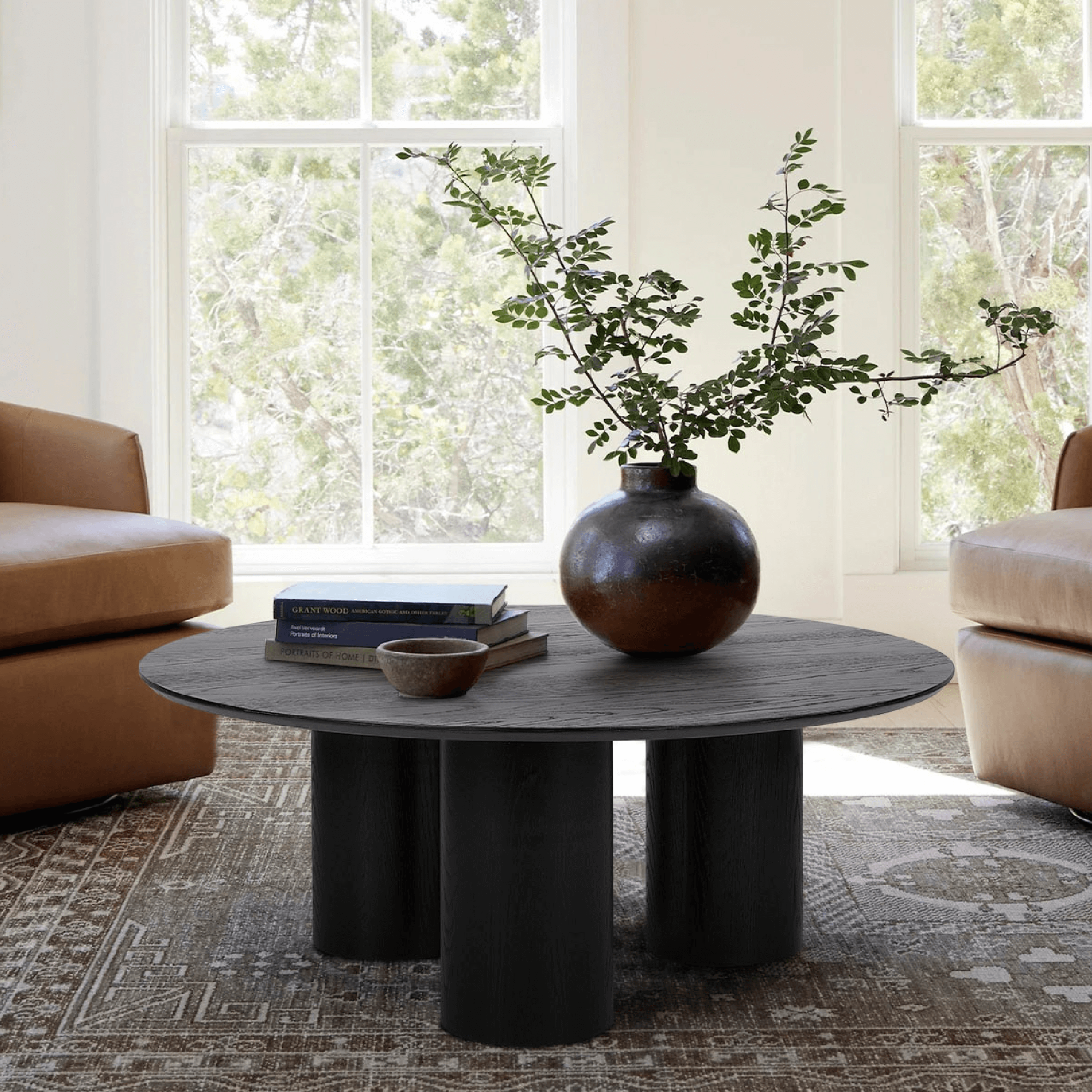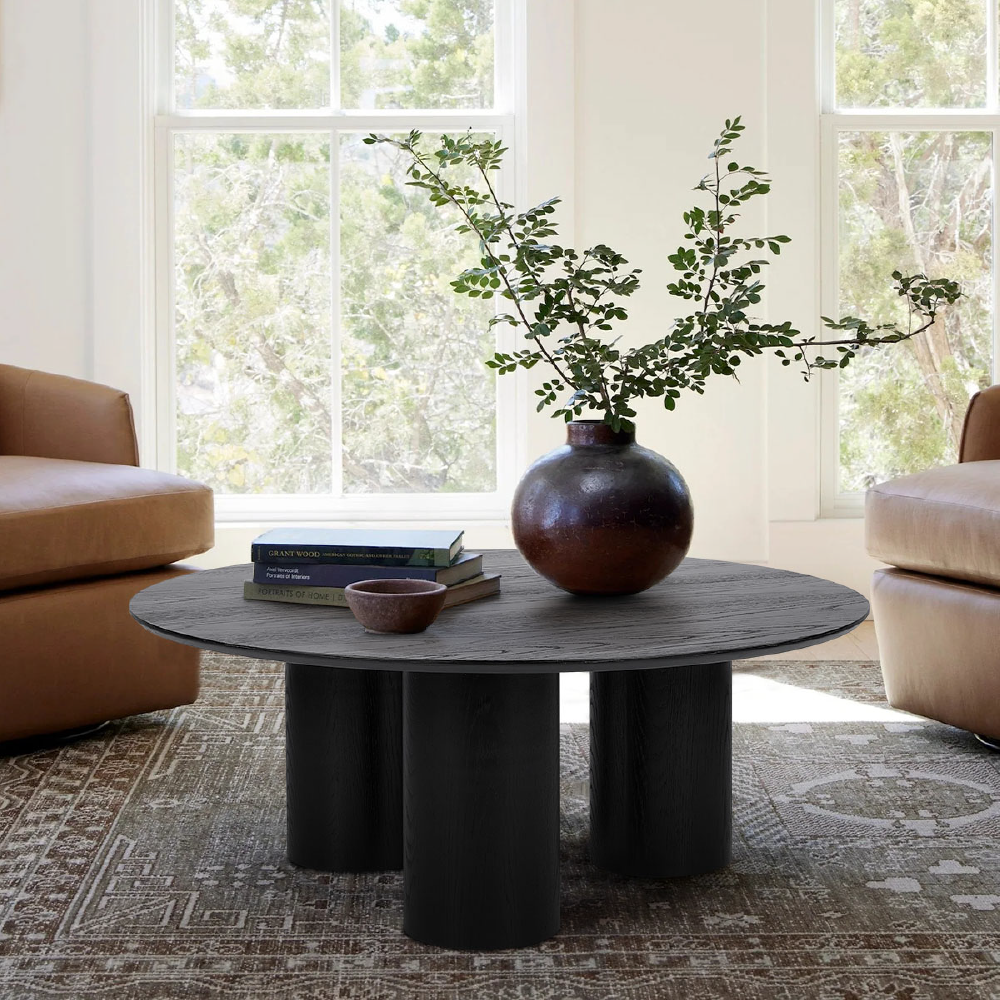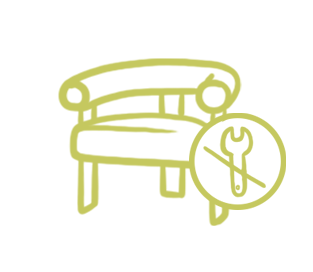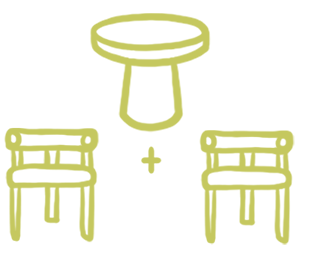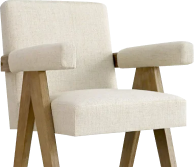End table dimensions start at 12 inches wide up to 24 inches wide. Depth is 18 inches to 28 inches. Square end tables are 18 to 24 inches square, and the diameter of round end tables is the same.
Dimensions vary slightly based on the shape of the end table – rectangular including square, round, oval, or less common shapes such as 6-sided, wedge-shaped or L-shaped. The most common height range is 22 to 26 inches tall, though both shorter and taller end tables are available.
Square and round end tables are the most popular, though rectangular end tables are common too. Other shapes are harder to find.
This end table size guide includes standard dimensions for each shape including their height, length and depth. You’ll find advice for how large your end table should be so that it works well with your sofa. And are end tables and side tables the same thing? Find out below!
How Deep Are End Tables?
The depth of end tables ranges from 18 to 28 inches.
The shape of the end table is a factor in how long it will be. Rectangular tables can be slightly deeper than square and round tables.
-
Depth of rectangular end tables: 18-28 inches. Oval end tables come in the same depth ranges.
-
Depth of square end tables: 18-24 inches.
-
Diameter of round end tables: 18-24 inches.
|
All End Tables |
Depth |
|
Short or Compact |
18 to 20 inches deep |
|
Standard or Average |
21 to 24 inches deep |
|
Long |
25 to 28 inches deep |
Note:Rectangular end tables are typically deeper than they are wide. The short side faces out. In other words, rectangular shaped end tables are deeper than they are wide. Though if they don’t have drawers or cabinets, they can be placed either way.
How Wide Are End Tables?
End tables are 12 to 24 inches wide, which is the side to side measurement. Keep in mind that the end table you select should have enough surface area to hold your intended items such as a lamp, decor, a coffee cup or two, a phone or tablet, a few books or magazines, etc.
-
Narrow or slim end tables are 12-16 inches wide. Most of these are rectangular or oval tables. They are a good fit for compact spaces and for use with shallow sofas and armchairs.
-
Standard end tables are 17-20 inches wide. Rectangular, round and square end tables fall in this range. This end table width is suitable for placement alongside most sofas, sectionals, and armchairs or easy chairs.
-
Deep end tables are 21-24 inches wide. With extra width, they pair well with an oversized sofa or chair. And they have more surface area, and many include storage shelves, cabinets or drawers.
|
All End Tables |
Width |
|
Narrow/Slim |
12 to 16 inches wide |
|
Standard |
17 to 20 inches wide |
|
Wide |
21 to 24 inches wide |
Note: Rectangular end tables are typically deeper than they are wide. The short side faces out. In other words, rectangular shaped end tables are deeper than they are wide. Though if they don’t have drawers or cabinets, they can be placed either way.
How Tall Are End Tables?
End tables are 18 to 30 inches tall, though the most common height range is 22-26 inches.
The key measurement for choosing end table height is the height of the arm on the sofa or chair it will sit next to. Ideally, the height of the end table’s top should be within 2 inches of this height. For example, if the top of the sofa’s arm is 23 inches, the ideal end table would be 21 to 25 inches tall.
-
Short end tables are less than 22 inches tall. They’re used with low-profile sofas, deep couches, futons and chairs.
-
Standard end tables are 22-26 inches tall, the most popular height range. They work with most sofas, sectionals and chairs.
-
Tall end tables are more than 26 inches tall and are the least common height. High end tables are best for use with tall and oversized sofas and chairs with high seats.
|
All End Tables |
Height |
|
Short |
Up to 22 inches tall |
|
Standard |
22 to 26 inches tall |
|
Tall |
Taller than 26 inches |
What Size Are Square End Tables?
Square end tables typically range from 18 to 24 inches in length and width. You’ll find a few that are smaller than 18 inches square, but they have very little surface area and don’t hold much. Larger square tables might also be found, but they tend to be bulky.
What Size Are Rectangular End Tables?
Rectangular end table size ranges from 12 to 24 inches in width and 18 to 28 inches in depth when you consider that square end tables are a type of rectangular table.
What Size Are Round End Tables?
The size of round end tables starts at about 18 inches in diameter and ranges to 24 inches in diameter. Diameter is the length across the table through its center.
What Size Should an End Table Be?
The size of an end table should correspond to the size of the furniture it complements. First, the end table height should be within 2 inches of the height of the arm of the sofa or chair nearest to it. If the sofa arm is 24 inches tall, the tabletop should be between 22 and 26 inches.
The length of the table should be about 1/4 to 1/3 the length of the sofa. If the sofa is 80 inches, for example, the table should be 20 to 26 inches long, aka wide. The depth should not be greater than the depth of the surrounding furniture, which will ensure that the table doesn’t stick out and become a nuisance.
How Much Space Should Be Between the Sofa and the End Table?
There should be 1 to 3 inches of space between the sofa and the end table. This distance ensures that items on the table are within easy reach and that the table looks visually cohesive with the sofa.
If the table is closer than 1 inch from the sofa, chafing of the sofa fabric or table materials may occur if either the table or sofa is slightly moved.
What Shapes Do End Tables Come In?
The most common end table shapes are round, square and rectangular (non-square). You will also find oval end tables, geometric shapes like 5-sided and 6-sided tables plus C-shaped and L-shaped tables.
Finally, wedge tables are trending – they have a narrow front, and the table widens towards the back, which is ideal when your furniture is placed in an arc around a corner, for example, rather than a “L” configuration.
Are End Tables and Side Tables the Same Thing? What Are the Differences?
End tables and side tables can refer to the same pieces of furniture, but there are a few key differences. While end tables are usually placed at the end of a sofa, sectional or row of seating, side tables are used in a wider range of locations including in a corner or hallway.
Secondly, side tables come in a wider range of height, length and width. Some are more compact than end tables – shorter and/or with less surface area. A few are taller than end tables and may be multi-tiered or nesting tables. Finally, while end tables are placed exclusively in living rooms, side tables are also used in bedrooms in place of a nightstand, and in dens, offices and bathrooms.







